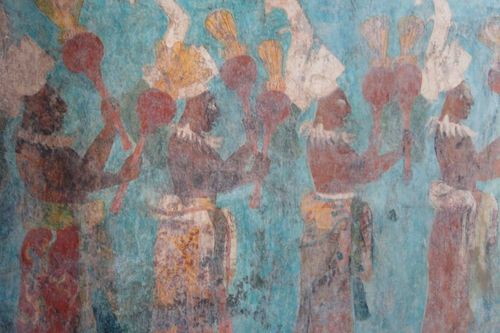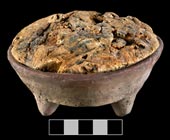 Last week the New York Times reported that the science world was a buzz with the publication of an article in Antiquities magazine solving the mystery of Maya Blue. The color, often described as matching the Caribbean sky, is a brilliant turquoise blue. It is shown here on a wall from the murals at Bonampak.
Last week the New York Times reported that the science world was a buzz with the publication of an article in Antiquities magazine solving the mystery of Maya Blue. The color, often described as matching the Caribbean sky, is a brilliant turquoise blue. It is shown here on a wall from the murals at Bonampak.
Most pigments are fugitive. They will fade over time, especially if exposed to the elements. Maya blue remains vivid on artifacts thousands of years old.
According to previous studies, Maya blue is made by fusing the mineral palygorskite with pigments from the leaves of the indigo plant. But the two ingredients do not readily combine, and it was unknown until now how the Maya fused them.
In the recent article archaeologists confirm the theory that copal incense was important to the production of Maya blue and that the preparation of the paint took place during the burning of incense at sacrificial ceremonies. The bodies of the sacrificial victims were painted blue just before they were killed. 
The National Geographic article includes more information about the finding of a significant bowl from the Mayan ruins. “The bowl was discovered more than a century ago at the bottom of the Sacred Cenote, a large sacrificial sinkhole at the Maya site of Chichén Itzá, which was associated with the rain god Chaak.
Lead study author Dean Arnold of Wheaton College in Illinois first came across the pottery bowl while searching through the Maya collection at the Field Museum. He noticed that the bowl contained a wedge of preserved incense dotted with white flecks and a blue pigment.” The flecks turned out to be palygorskite and indigo. Putting two and two together solved the mystery.


Leave a Reply